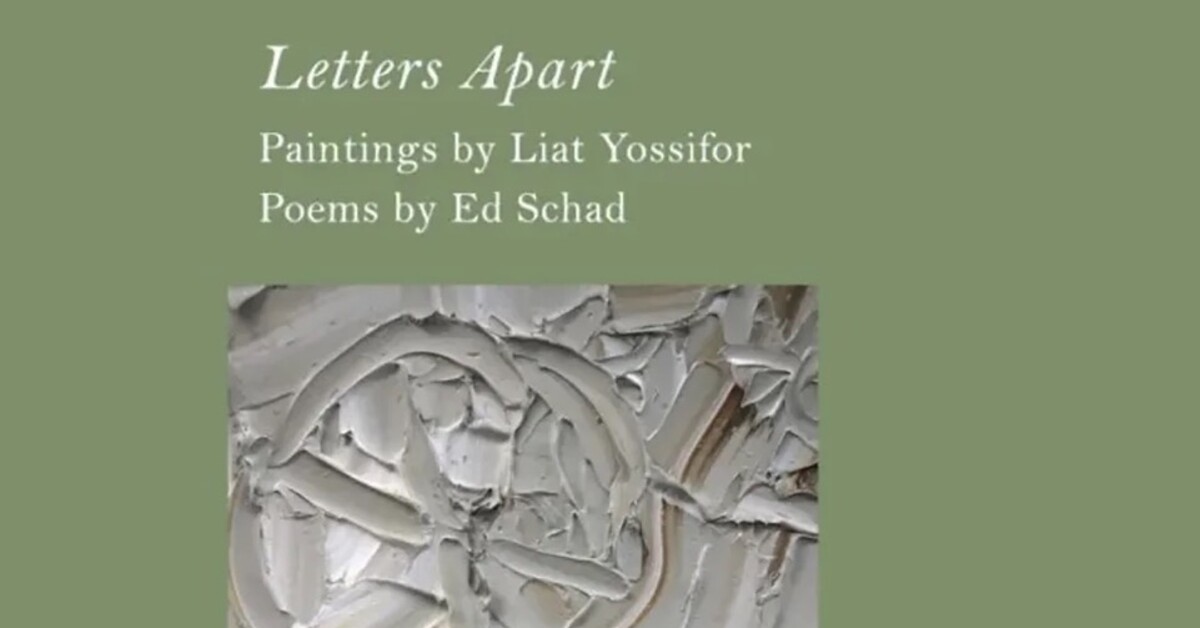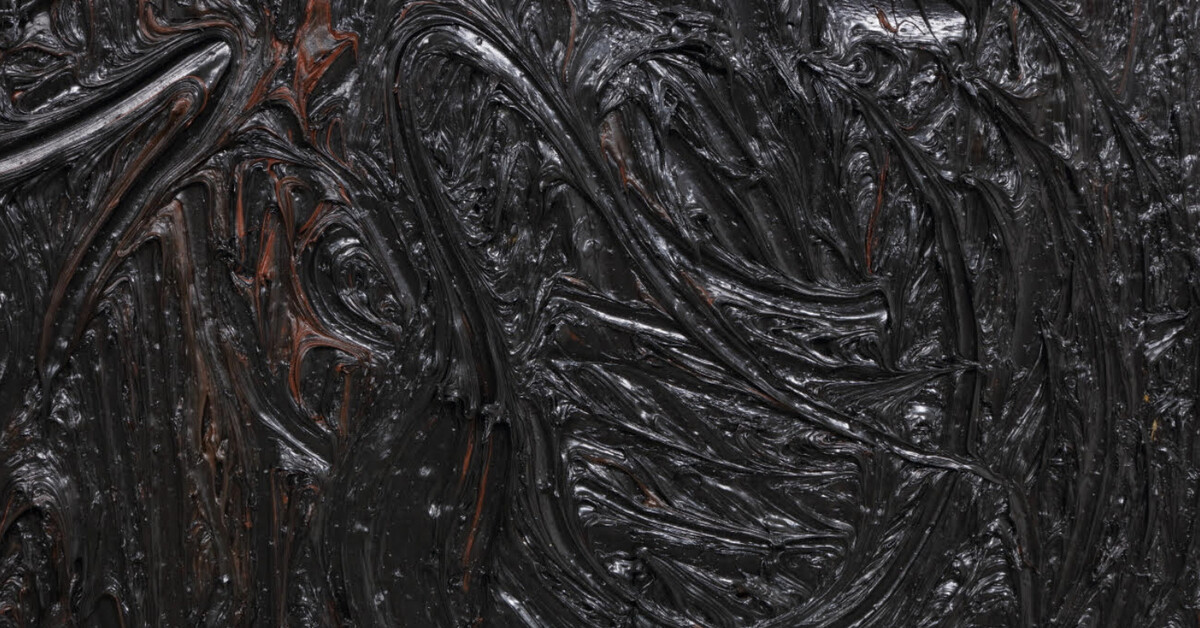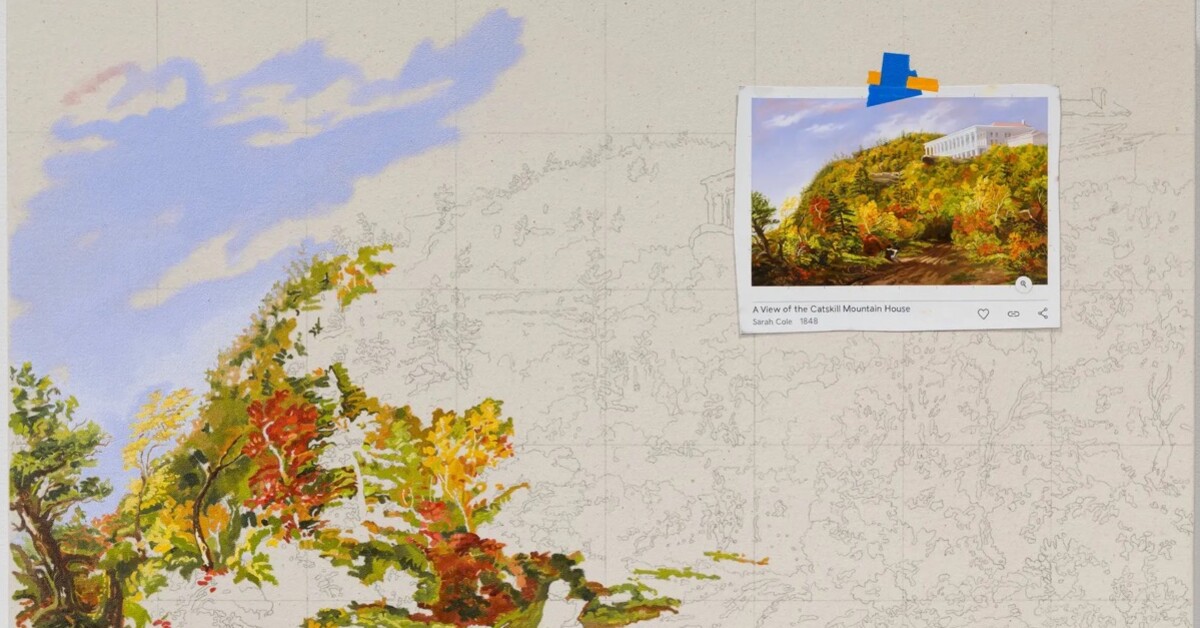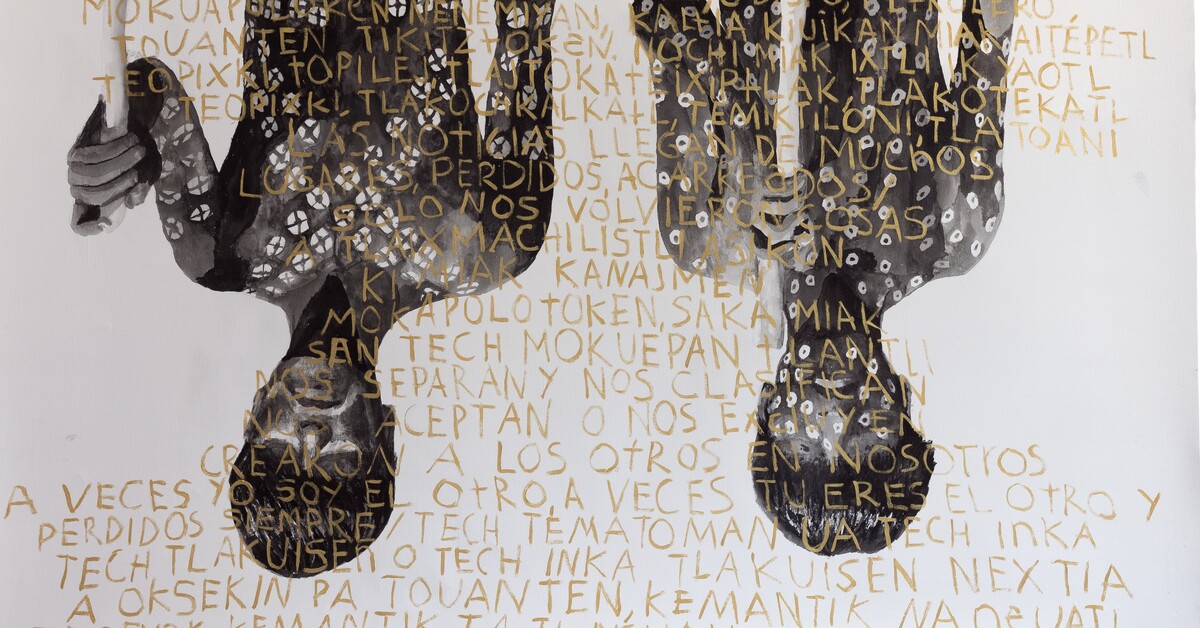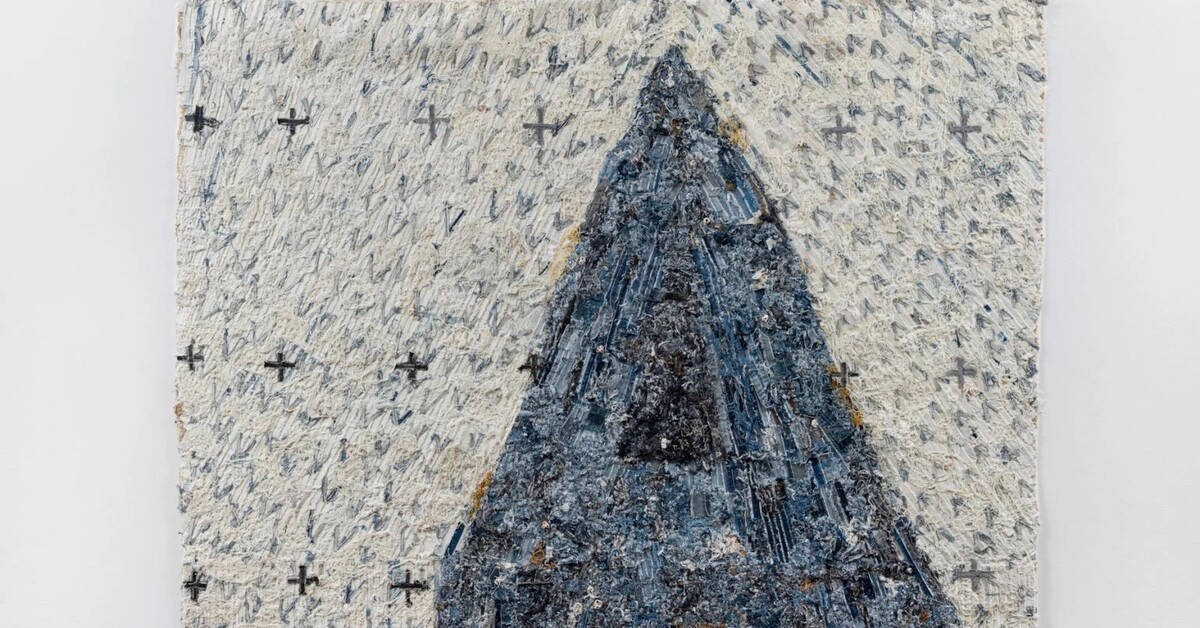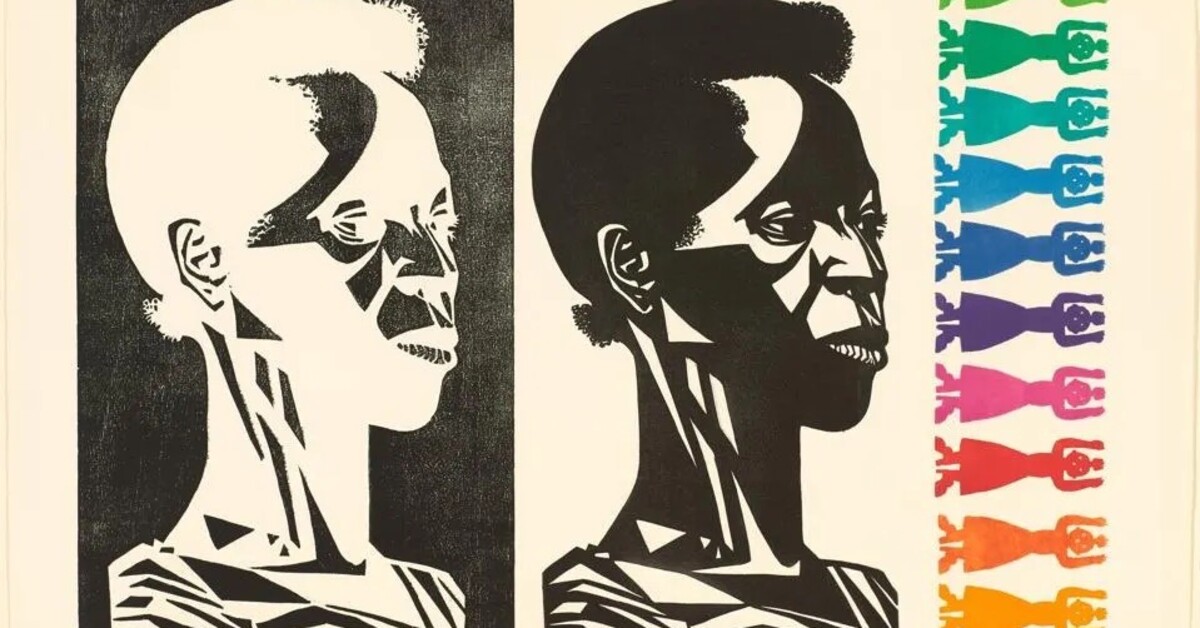The Art We’re Obsessed With in April 2024
Artsy / Apr 26, 2024 / by Artsy Editorial / Go to Original
“The Art We’re Obsessed With” is a monthly series paying homage to the artworks Artsy staff members can’t stop thinking about, and why. From little-known artists our editors stumble across at local shows to artworks going viral on our platform, these are the artworks we’re obsessed with this month.
Charisse Pearlina Weston, to furl in the call from above, 2022
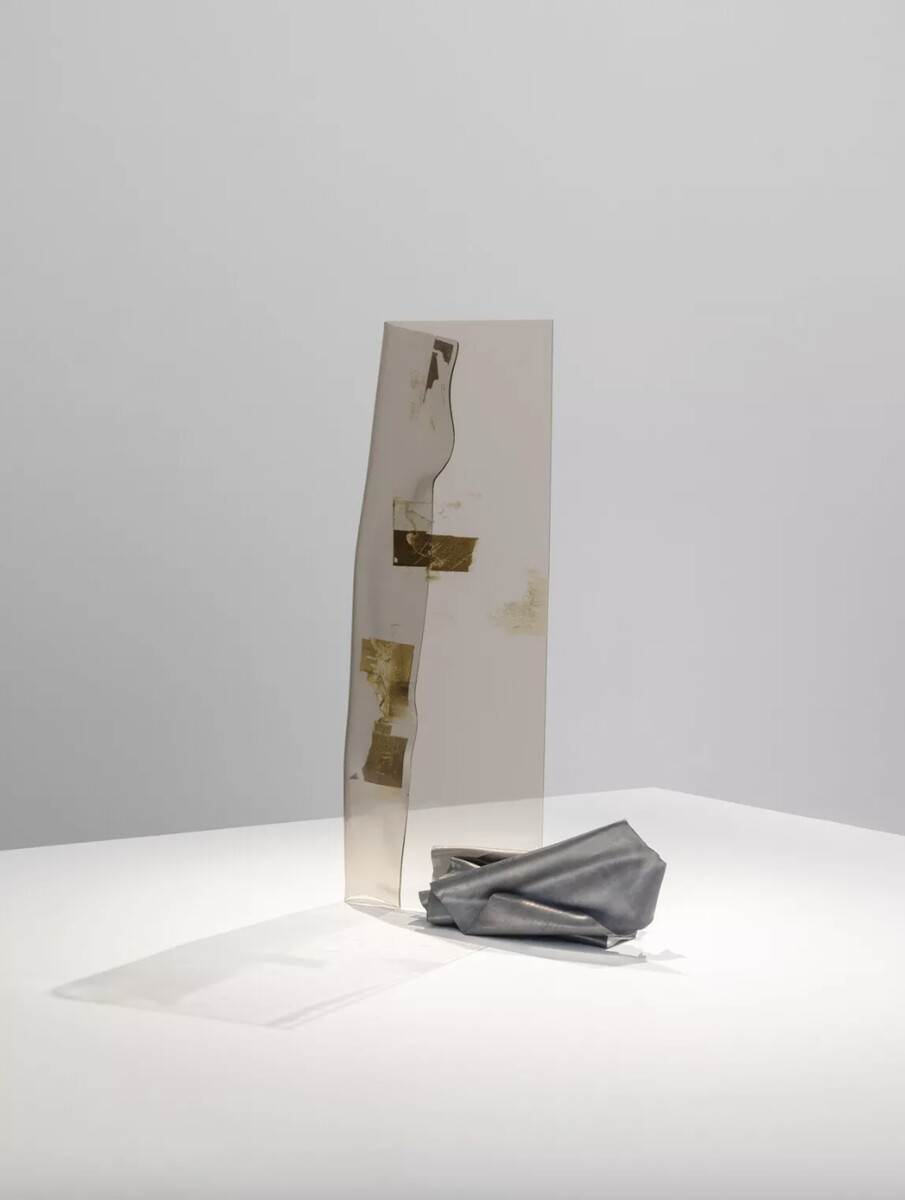
New York–based artist Charisse Pearlina Weston’s contribution to this year’s Whitney Biennial is among my favorites. That work—consisting of panes of smoked glass suspended above visitors’ heads, obliquely slicing the gallery’s airspace—rethinks the typical material qualities of glass, changing it from something light and fragile into something more ominous. This smaller work, to furl in the call from above (2022), takes a similarly transformative approach to the medium; here, glass buckles in an apparent gesture of retreat. Part of a body of work that references the history of Black protest by incorporating archival imagery and text, this sculpture evokes a ruptured urban landscape, but also contains poetic whispers of malleability, refusal, and self-protection.
—Olivia Horn, Associate Managing Editor
Guglielmo Castelli, the paper trail, 2023
My brain is currently full of all the art I saw while I was in Venice for the opening of the Biennale—from John Akomfrah’s moving video installation on the human impact of colonialism at the British pavilion to the rectangular ceramics of the late queer feminist pioneer Nedda Guidi. Outside the bustle of the Giardini, I was also charmed by the macabre collages and paintings in Guglielmo Castelli’s exhibition at Palazzetto Tito, “Improving Songs for Anxious Children.” Here, the artist draws from the iconography of an early 20th-century children’s book in theatrical, fluidly distorted canvases with a gloomy palette. The paper trail (2023) is a great example of what I love about his work—the greenish glow, the agglomeration of abstracted Cubist shapes at the edges, and the surreal motif of an everyday object (here, a comb) dotted across the canvas.
—Josie Thaddeus-Johns, Editor
Rachel MacFarlane, The Event, 2024
I was instantly drawn to the mesmerizing color palette of burnt orange hues depicted in Rachel MacFarlane’s The Event (2024). Captivating yet utterly dystopian, this radiant landscape feels like a scene straight out of a sci-fi movie. The Queens-based artist recently mounted her first New York solo show, unveiling a new body of work that reflects on the impact of climate change.
Witnessing climate events—from hurricanes to flooding—in her travels has deeply impacted MacFarlane’s practice. Using thick brushstrokes, MacFarlane transforms her memories into an otherworldly dreamscape, as skeletal plant forms cast looming shadows across the desert surface. Bathed in warm sunlight, The Event (2024) is a haunting portrayal of a world in a state of decay.
—Adeola Gay, Curatorial Manager
Kevin McNamee-Tweed, Accumulation(Anti-allegories), 2023
A “meta” moment in an artwork never ceases to delight, and this charming book-sized piece by Kevin McNamee-Tweed manages to present both a painting-within-a-painting and a ceramic-within-a-ceramic simultaneously. What’s more, two of the paintings depicted in Accumulation(Anti-allegories) were included in his recent show with Tatjiana Pieters.
McNamee-Tweed’s “ceramic paintings,” as the artist has dubbed them, often feature the quirky domestic interior of a creative type—paintings and vessels arranged slightly helter-skelter on the walls and shelves, art-making materials strewn about the floor. The slabs are sculpted using clays native to the artist’s home in North Carolina, then carved and glazed with astonishing detail. To me, the works call to mind the narrative-rich scenes found on shards of ancient Greek vessels. Maybe someday in the distant future, someone will be lucky enough to pull one of these from an archeological dig—what will it say about us?
—Jordan Huelskamp, Curatorial Lead
Dorothy Bohm, Villa des Tulipes, 18th arrondissement, 1995
Accessible, affordable, and eye-opening, The Photographers Gallery is a London favorite of mine, perfect for relaxed afternoons or as a respite from the Oxford Street chaos it’s adjacent to. The gallery’s current print sale exhibition celebrates the late German British photographer Dorothy Bohm, coinciding with what would have been the artist’s centenary.
Known for her street photography and portraiture that spanned a life of extensive travel, Bohm created an influential body of work that is grounded in a humanism that is often playful and occasionally touching, as shown in this charming picture of children playing taken in mid-1990s Paris, a city that would provide plenty of inspiration for the artist over her career.
—Arun Kakar, Market Editor
Filippo de Pisis, Natura morta con radicchio e mele, 1949
At the 60th Venice Biennale’s exhibition “Foreigners Everywhere,” curated by artistic director of the Museu de Arte de São Paulo, Adriano Pedrosa, there was one room dedicated to queer intimacy and experience, filled with many dazzling works by Louis Fratino. But it also featured several smaller, quieter works by the late Italian painter Filippo de Pisis. Though the artist was previously unknown to me, I was drawn to the poetry of these spare, tender portrayals—and so was not surprised to find that the artist was also a writer.
De Pisis left his native Italy to live in Paris, where he could more freely live an openly gay lifestyle. Though he was known for painting the male figure, he also created still lifes, like this one, that are equally rife with emotion. This particular work was featured in a 2022 group show at the Bologna gallery P420 and is from the final chapter of his career, when he had moved back to Italy. De Pisis described his works from this time as ‚Äúdi semplicit√Ý e di brivido‚Äù‚Äî‚Äúof simplicity and thrill‚Äù‚Äîwhich seems to perfectly encapsulate their elegance and intrigue.
—Casey Lesser, Editor in Chief & Director of Content
Haley Josephs, Out of the Storm (and In Again), 2022–23
Each of Haley Josephs’s ethereal paintings hold a palpable sense of yearning, tracing her imaginary characters as they navigate radiating, dreamlike landscapes. This March, at her fourth solo exhibition with Jack Barrett, I felt completely ensnared by these mystical scenes—alternating from her bright, saturated figurative paintings to her melancholic works in deeper, cooler colors.
Much of Josephs’s work is inspired by her memories of her late sister, imbuing her work with a wistful undertone. So, Out of the Storm (and In Again) (2022–23) basks in the ephemeral beauty of memory. The painting features a single figure, emitting hues of fiery reds, oranges, and warm yellow, starkly contrasting with the shadowy backdrop. The character stands poised as if caught in mid-movement, a sanguine symbol of how brightly the memory of those we hold close can burn, sometimes for the rest of time.
—Maxwell Rabb, Staff Writer
Charisse Pearlina Weston, to furl in the call from above, 2022

New York–based artist Charisse Pearlina Weston’s contribution to this year’s Whitney Biennial is among my favorites. That work—consisting of panes of smoked glass suspended above visitors’ heads, obliquely slicing the gallery’s airspace—rethinks the typical material qualities of glass, changing it from something light and fragile into something more ominous. This smaller work, to furl in the call from above (2022), takes a similarly transformative approach to the medium; here, glass buckles in an apparent gesture of retreat. Part of a body of work that references the history of Black protest by incorporating archival imagery and text, this sculpture evokes a ruptured urban landscape, but also contains poetic whispers of malleability, refusal, and self-protection.
—Olivia Horn, Associate Managing Editor
Guglielmo Castelli, the paper trail, 2023
My brain is currently full of all the art I saw while I was in Venice for the opening of the Biennale—from John Akomfrah’s moving video installation on the human impact of colonialism at the British pavilion to the rectangular ceramics of the late queer feminist pioneer Nedda Guidi. Outside the bustle of the Giardini, I was also charmed by the macabre collages and paintings in Guglielmo Castelli’s exhibition at Palazzetto Tito, “Improving Songs for Anxious Children.” Here, the artist draws from the iconography of an early 20th-century children’s book in theatrical, fluidly distorted canvases with a gloomy palette. The paper trail (2023) is a great example of what I love about his work—the greenish glow, the agglomeration of abstracted Cubist shapes at the edges, and the surreal motif of an everyday object (here, a comb) dotted across the canvas.
—Josie Thaddeus-Johns, Editor
Rachel MacFarlane, The Event, 2024
I was instantly drawn to the mesmerizing color palette of burnt orange hues depicted in Rachel MacFarlane’s The Event (2024). Captivating yet utterly dystopian, this radiant landscape feels like a scene straight out of a sci-fi movie. The Queens-based artist recently mounted her first New York solo show, unveiling a new body of work that reflects on the impact of climate change.
Witnessing climate events—from hurricanes to flooding—in her travels has deeply impacted MacFarlane’s practice. Using thick brushstrokes, MacFarlane transforms her memories into an otherworldly dreamscape, as skeletal plant forms cast looming shadows across the desert surface. Bathed in warm sunlight, The Event (2024) is a haunting portrayal of a world in a state of decay.
—Adeola Gay, Curatorial Manager
Kevin McNamee-Tweed, Accumulation(Anti-allegories), 2023
A “meta” moment in an artwork never ceases to delight, and this charming book-sized piece by Kevin McNamee-Tweed manages to present both a painting-within-a-painting and a ceramic-within-a-ceramic simultaneously. What’s more, two of the paintings depicted in Accumulation(Anti-allegories) were included in his recent show with Tatjiana Pieters.
McNamee-Tweed’s “ceramic paintings,” as the artist has dubbed them, often feature the quirky domestic interior of a creative type—paintings and vessels arranged slightly helter-skelter on the walls and shelves, art-making materials strewn about the floor. The slabs are sculpted using clays native to the artist’s home in North Carolina, then carved and glazed with astonishing detail. To me, the works call to mind the narrative-rich scenes found on shards of ancient Greek vessels. Maybe someday in the distant future, someone will be lucky enough to pull one of these from an archeological dig—what will it say about us?
—Jordan Huelskamp, Curatorial Lead
Dorothy Bohm, Villa des Tulipes, 18th arrondissement, 1995
Accessible, affordable, and eye-opening, The Photographers Gallery is a London favorite of mine, perfect for relaxed afternoons or as a respite from the Oxford Street chaos it’s adjacent to. The gallery’s current print sale exhibition celebrates the late German British photographer Dorothy Bohm, coinciding with what would have been the artist’s centenary.
Known for her street photography and portraiture that spanned a life of extensive travel, Bohm created an influential body of work that is grounded in a humanism that is often playful and occasionally touching, as shown in this charming picture of children playing taken in mid-1990s Paris, a city that would provide plenty of inspiration for the artist over her career.
—Arun Kakar, Market Editor
Filippo de Pisis, Natura morta con radicchio e mele, 1949
At the 60th Venice Biennale’s exhibition “Foreigners Everywhere,” curated by artistic director of the Museu de Arte de São Paulo, Adriano Pedrosa, there was one room dedicated to queer intimacy and experience, filled with many dazzling works by Louis Fratino. But it also featured several smaller, quieter works by the late Italian painter Filippo de Pisis. Though the artist was previously unknown to me, I was drawn to the poetry of these spare, tender portrayals—and so was not surprised to find that the artist was also a writer.
De Pisis left his native Italy to live in Paris, where he could more freely live an openly gay lifestyle. Though he was known for painting the male figure, he also created still lifes, like this one, that are equally rife with emotion. This particular work was featured in a 2022 group show at the Bologna gallery P420 and is from the final chapter of his career, when he had moved back to Italy. De Pisis described his works from this time as ‚Äúdi semplicit√Ý e di brivido‚Äù‚Äî‚Äúof simplicity and thrill‚Äù‚Äîwhich seems to perfectly encapsulate their elegance and intrigue.
—Casey Lesser, Editor in Chief & Director of Content
Haley Josephs, Out of the Storm (and In Again), 2022–23
Each of Haley Josephs’s ethereal paintings hold a palpable sense of yearning, tracing her imaginary characters as they navigate radiating, dreamlike landscapes. This March, at her fourth solo exhibition with Jack Barrett, I felt completely ensnared by these mystical scenes—alternating from her bright, saturated figurative paintings to her melancholic works in deeper, cooler colors.
Much of Josephs’s work is inspired by her memories of her late sister, imbuing her work with a wistful undertone. So, Out of the Storm (and In Again) (2022–23) basks in the ephemeral beauty of memory. The painting features a single figure, emitting hues of fiery reds, oranges, and warm yellow, starkly contrasting with the shadowy backdrop. The character stands poised as if caught in mid-movement, a sanguine symbol of how brightly the memory of those we hold close can burn, sometimes for the rest of time.
—Maxwell Rabb, Staff Writer

